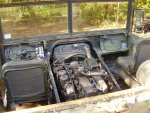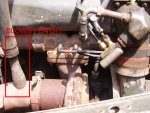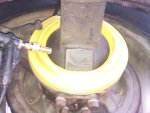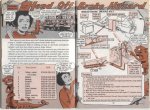So, I'm trying to figure out exactly how I'm going to plumb the air pressure / vent lines and I wanted to get some input before I get into this because I'm sure you guys can help me do a better job with this than I'd be able to manage on my own.
I'm thinking that I'll run individual 1/4" air-pressure / vent lines to some type of manifold, where I'll have the main system tied into the manifold (using a mini-regulator), and a main on (pressure) / off (vent) valve, and then a larger (what size?) vent line that will be capped with some type of free-flowing filter.
I asked here, but what would be the best type of hose to use for this application?
Keith_J suggested Polyethylene.
I'm probably also going to install valves at the manifold that will allow me to cut-off air to any of the individual air-pressure / vent lines. Someone posted pics of a homebrew fording setup like that somewhere on this forum, and that seemed like a pretty good idea to me. You know, just so that in case there's a failure somewhere, you can isolate that section of the pressurizing system.
The other thing about that (manifold and individual valves) is that I'd like to be able to use the same mini-regulator and manifold to pressurize the
remote reservoir for the brake system. Yeah, so I can pressure-bleed my brakes using Mah Deuce's air supply.
Another thing I've been mulling over is the idea of installing some type of Tee (or Y) junction where each of the air-pressure / vent lines terminates at the place where it's connected to whatever's being vented. The thing I'm thinking about is that it seems like it might be a good idea to have an easy way to blow-out the lines. Seems to me that with such long vent lines, especially the ones that will run long horizontal stretches, that it's pretty likely the lines will accumulate some gunk and might be prone to clogging. But if I installed valves that I could open/close right where they end (at whatever's being vented), then I could open-up the mini-regulator to let more pressure blow through the lines and clean out anything that might have been accumulating in there. Good idea? Bad idea? Got any better ideas? Open to input here. Help me think this through.
And just to make sure I'm not over-looking anything, what all needs to get vented / pressurized? My list is looking like this:
transmission (tied into vent / pressure system)
bellhousing (tied into vent / pressure system)
transfercase (tied into vent / pressure system)
differentials (tied into vent / pressure system)
brake system - master cylinder (tied into vent / pressure system via. remote master cylinder)
fuel tank (should be vented separately, right?)
slobber tube (re-routed to Racor CCV and then to intake)
air compressor intake (re-routed to intake)
What else? Am I forgetting anything? Does anyone pressurize the knuckles on the front axle? I noticed that there are some small plugs on the front/back of the knuckles that would be easy to tap into with an air supply. Don't know if the axle boots could handle that, but I jsut installed a set of the one-piece silicone boots. Would be kinda funny to see those things blow-up like balloons...







